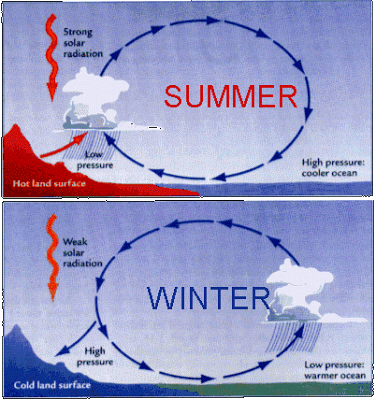Two people have died after a landslide destroyed their home in Thane in northern Maharashtra State, India, on Tuesday 30 July 2019. Birendra Jaswal, 40 and his son Sunny Jaswar, 10, were sleeping in the building when part of a hillslope collapsed onto it. They were rushed to the Chatrapati Shivaji Hospital in Kalwa for treatment, but both died of their injuries. Jaswar’s wife Neelam, 35, was also injured and is being treated in the hospital, where her condition is described as 'stable'/ Local authorities have evacuated another nineteen families from fifteen nearby homes, which they describe as having been built illegally by unscrupulous landlords on the flanks of Parsik Hill, which is notoriously unstable following years of illegal quarrying and deforestation. The evacuated families are being housed temporarily at a nearby school while the properties are demolished. What long term plans the authorities have for rehousing them are unclear.
The aftermath of a landslide on the side of Parsik Hill in Thane that killed two people. Hindustan Times.
The area where the incident occurred is known to suffer a high risk of
landslides, particularly during the monsoon season when high rainfall
frequently triggers such events. Landslides
are a common problem after severe weather events, as excess pore water
pressure can overcome cohesion in soil and sediments, allowing them to
flow like liquids. Approximately 90% of all landslides are caused by
heavy rainfall. To this end the slopes above the expressway had been
re-enforced against such events. However local press sources are
reporting that these defences are largely iron in construction, and in
places are showing signs of severe corrosion.
Maharashtra
State has a monsoon climate, with the rains typically arriving around
the start of June and peaking in July. The area where the 19 July 2015
landslip occurred typically receives over 500 mm of rain in June and
over 1300 mm in July, and the area suffers frequent landslip and
flooding events. This situation is made worse by widespread
deforestation and quarrying for construction materials (much of it
illegal) which tends to destabilise hill slopes.
Monsoons
are tropical sea breezes triggered by heating of the land during the
warmer part of the year (summer). Both the land and sea are warmed by
the Sun, but the land has a lower ability to absorb heat, radiating it
back so that the air above landmasses becomes significantly warmer than
that over the sea, causing the air above the land to rise and drawing in
water from over the sea; since this has also been warmed it carries a
high evaporated water content, and brings with it heavy rainfall. In the
tropical dry season the situation is reversed, as the air over the land
cools more rapidly with the seasons, leading to warmer air over the
sea, and thus breezes moving from the shore to the sea (where air is
rising more rapidly) and a drying of the climate. This situation is
particularly intense in South Asia, due to the presence of the
Himalayas. High mountain ranges tend to force winds hitting them
upwards, which amplifies the South Asian Summer Monsoon, with higher
winds leading to more upward air movement, thus drawing in further air
from the sea.
Diagrammatic representation of wind and rainfall patterns in a tropical monsoon climate. Geosciences/University of Arizona.
See also...
Follow Sciency Thoughts on
Facebook.








